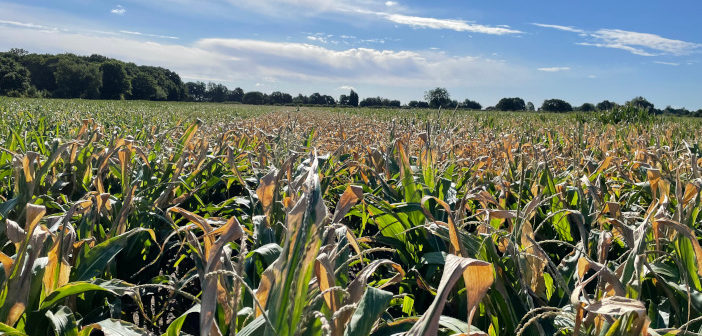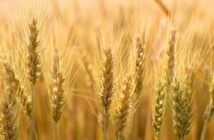The independent silage and microbiologist Dr David Davies is telling maize growers that ‘waiting until the usual time of harvest, in the hope of higher yields and more starch, is likely to be counterproductive’ this season.
Dr Davies posits that maize crops which are already in very poor condition will not recover; their cobs are unlikely to set and the crop will not provide a good level of starch.
“Waiting may compromise the entire crop and leave you with nothing of value,” Dr Davies says, especially as a damaged crop is far more susceptible to fungal infection, he adds.
“The crop’s defences will be low so colonisation by fungi will be far easier, especially if the crop damage is followed by rain,” he explains. “This has the potential to increase mycotoxin production and aerobic spoilage losses, either during the initial harvest or during feed-out from the clamp.”
Therefore, Dr Davies’ advice is that growers should cut their losses, harvest what remains of their crops, and take particular care with the preservation of maize silage this season.
“The fermentation will be more difficult than normal maize, as the ash and protein content will be higher and the greater challenges from yeasts and moulds will increase the challenges at feed-out from aerobic spoilage.”
“Aerobic spoilage will be a major concern, so additives that contain chemicals to inhibit the aerobic spoilage from organisms are the only ones that will not compromise fermentation quality.”
As such, the feed and forage preservation specialist company Kelvin Cave recommend a preservative from the Safesil range, for forage made and stored in conditions such as those growers are currently experiencing.
Michael Carpenter, Kelvin Cave’s technical director, says: “Making maize silage successfully in the face of such difficult conditions requires attention at every step of the process, as there’s so much potential for spoilage and dry matter loss.”
“Rather than trying to out-compete undesirable microorganisms, as is the case with biological inoculants, our human-food grade, chemical preservatives work by eliminating them at the outset.”
“The additional use of a SilaPactor to consolidate the maize applies tonnes of extra weight to the clamp, which excludes far more air than a tractor alone,” Mr Carpenter says. “This can be expected to increase the density of maize silage by at least 20 per cent.”
However, Dr Davies warns growers to expect a lower feed value from their drought-stressed maize crop this season as the starch content has been compromised.”
But, he adds “there are gains to be made in terms of the drought-stressed crop’s fibre and its degradability;” which gives drought-stressed maize a similar metabolisable energy to the regular crop (as the table below demonstrates).
Table 1: Average (mean) farm silage analyses comparing heat/drought-stressed maize in 2013 to a more typical growing season in 2014 (south-eastern Europe)
| Heat/drought-stressed maize (2013) | Maize grown in a more typical season (2014) | |
| Dry matter (DM) % | 32.8 | 35.0 |
| Starch g/kg DM | 252 | 352 |
| Metabolisable energy MJ/kg DM | 11.0 | 11.5 |
| NDF g/kg DM | 449 | 360 |
| Rumen degradable NDF
% of total NDF |
54 | 53 |
| Total degradable NDF g/kg DM | 244 | 191 |




